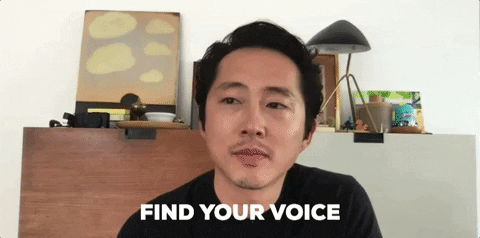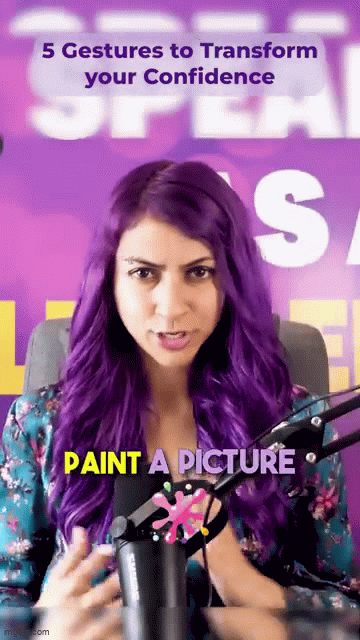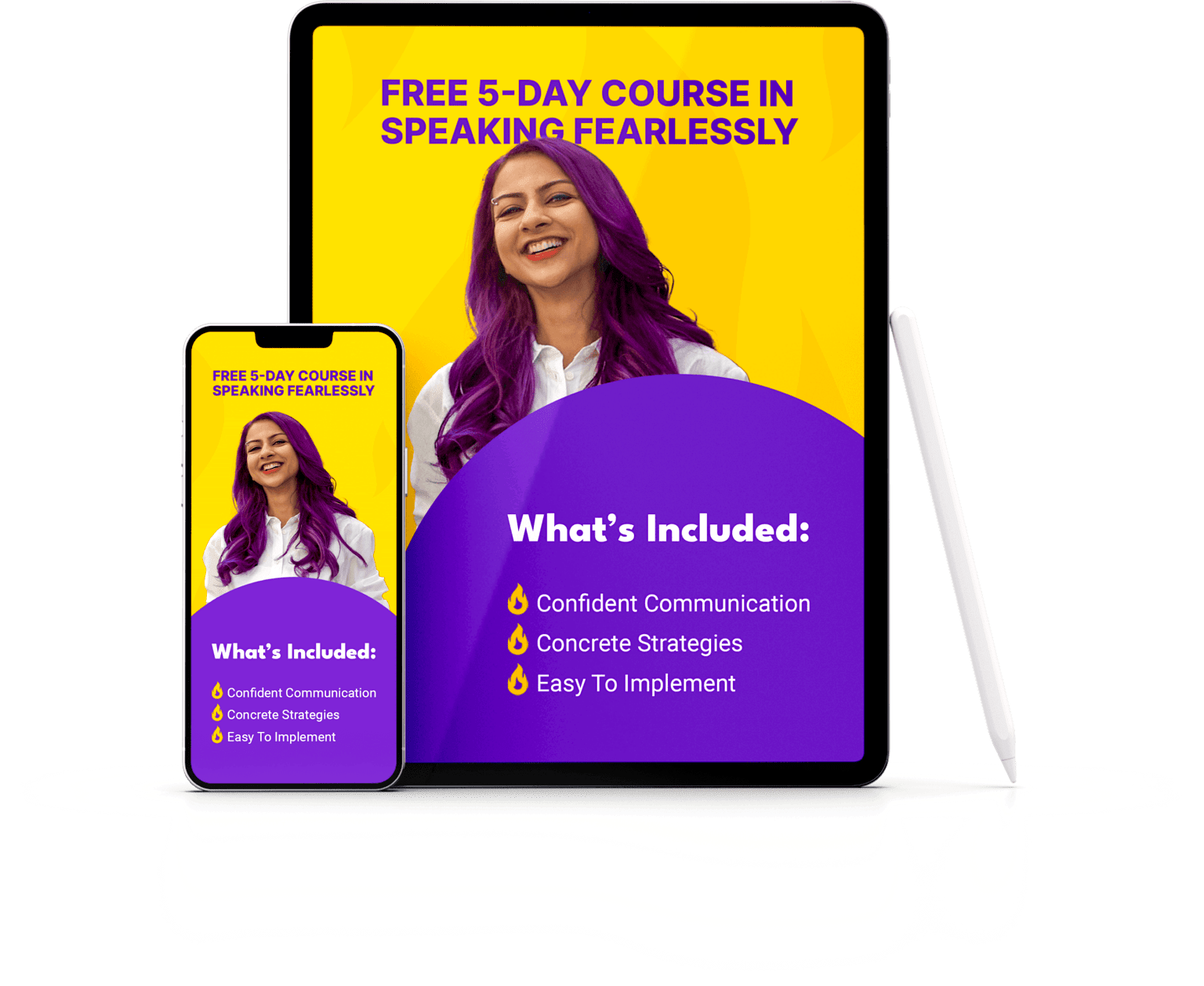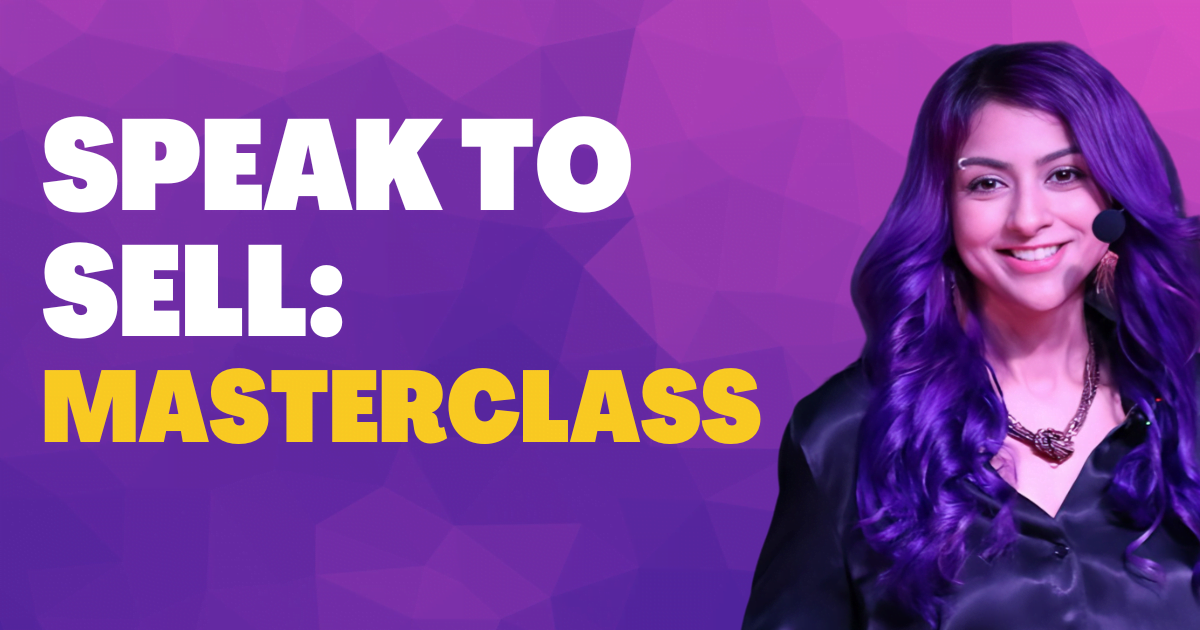Everyone has a favorite TED talk.
As a coach who’s done 3 TEDx talks, I often get asked “Nausheen, how can I speak like a TED speaker?”
The truth is, most entrepreneurs and execs don’t necessarily want to stand on the red dot on the TED stage. But they want to leave an impression the way that TED speakers do.
So today, I’m doing a deep dive into how you can speak like a TED speaker, where you could use the same techniques that they use, and where you shouldn’t try talking like a TED speaker.

Nausheen I. Chen on the TEDx stage in China
Table of Contents
Why emulate TED Talk speakers?
The first TED conference was held in 1984. Since then, it’s become a phenomenon. It’s undeniable that people can’t get enough of TED talks – as of February 2023, the platform was viewed over 1.7 billion times. Say the phrase “TED talk” anywhere in the world, and people will know what you’re talking about.
Why are TED talks so powerful? It’s not just the content, but the way the talks are delivered that people find compelling.
Top 5 reasons to emulate TED speakers

A number of people are impressed by TED speakers – but aren’t quite sure why. As a coach, I always want you to peel back the curtain and analyze exactly what tools speakers are using to create powerful first impressions.
I’d like to share with you my analysis of the top reasons why TED speakers (and their talks) stand out and are worth emulating:
- Focus. The best thing about TED talks is that they showcase exactly one idea – so the goal of the talk is crystal clear for the audience.
- Memorability. Each opportunity to speak is an opportunity to be heard, understood and remembered. When you speak like someone on the TED stage, you get that X factor.
- Perspective. TED talks are known for sharing new, surprising perspectives – helping the audience look at things from a new angle.
- Storytelling. TED speakers use storytelling in every single talk – a great reminder for us to be personal and share our unique perspectives when we speak on any stage.
- Commanding attention. Everything about a TED talk – the time limit, the body language you use, and how you speak – is designed to command attention. In the attention economy, the best thing you can do for your personal brand is to learn how to command and retain attention.
When to use the TED Talk style of speaking

Photo by Campaign Creators on Unsplash
You don’t need to wait to be on the TED stage to speak like a TED speaker.
We can learn from the way that TED speakers deliver their talks – and use the same techniques in many other presentations.
Here are some situations where you can add a TED talk element to your presentations:
- Sales presentations. Most TED talks have a personal and passionate element to them. By using this element in your sales pitch, you can make it clear why you’ve created the product or service you offer. Talking about a story or taking the listeners on a journey is super impactful when you want to make a sale.
- Podcasts. While it won’t work to talk for 18 minutes straight in a podcast, learning how to tell your story in a captivating way like a TED speaker will pay off.
- Keynote speeches. You can take the TED approach in your next keynote talk: you can show your passion for your subject matter, tell the audience your journey, and share your wins and losses.
How to speak like a TED Talk speaker
TED speakers are confident and prepared. If you want to speak like a TED speaker, this strategy will get you there.

1. Develop your voice
Develop your voice by using these tips:
- Project your voice. Vocal projection is a must if you want to echo the confidence of a TED speaker. Speak so your voice can reach the back of the room.
- Vary your pitch and pace. Monotony is not your friend. If you want applause at the end of your talk, keep it interesting by varying your pitch and pace.
- Find your unique voice. Add humor and personality to your talk to amplify your voice. People find your uniqueness interesting and want to hear from you.
- Enunciate. Speak clearly so that people aren’t left guessing what you said. The better you enunciate, the more in the moment your audience is.
- Pause. Pauses have power. When you take a beat during your presentation, you give the audience a chance to reflect on what you said, and redirect attention back to you.
Example: The most popular TED talk (by Sir Ken Robinson) asks the question, “Do schools kill creativity?” and also showcases how he uses his voice to express his ideas. Another element of this talk is his skillful use of pauses, starting after “In fact, I’m leaving,” but injected into his entire presentation. Every time he makes a joke or reveals an important point, he pauses – and the audience either laughs or has extra time to think about his last point.
2. Use energy and passion to your advantage
Passion is integral to TED talks – so speak on what you’re passionate about and ensure that the audience sees that passion come through in the way you deliver.
A number of my clients are subject matter experts. They know their area of expertise inside out. However, when they speak, their passion about their subject doesn’t immediately come through. So I’d like you to be intentional about integrating and highlighting your passion to give wings to your talk.
Another crucial element is energy. I coach all my clients to show up with high energy and vary their energy throughout their talk so that it’s engaging and draws the audience in. The more variety you can add in, the more interesting and dynamic your presentation will be.
Example: I started my first TEDx talk “Believe in Conquering Fear Through Speaking” with medium energy, and then built it up higher and higher till I reached the climax of my story.
3. Master your body language

Body language can make or break a TED talk – or your next podcast.
Here are some tips on how to master your body language so that you’re always impactful:
- Use gestures. “Paint the space” by using intentional gestures to reinforce the key points of the talk. You can do this by counting on your fingers, showing “small to large,” etc.
- Plant your feet. Your posture should exude confidence. This means that you shouldn’t sway back and forth, tap your foot, or fidget. Plant your feet firmly on the ground and animate your upper body.
- Use the space available to you. Use the full space: not just in how you gesture, but where and how you step. Move intentionally instead of randomly, and don’t move continuously (or it will be hard for the audience to focus on you).
Example: Have you ever seen a TED talk about nothing? Now you have. The reason this talk worked is because Will Stephen nailed the body language.
4. Use storytelling to your advantage
Stories are captivating and they make a great opener for a talk. They can also be used to reinforce a point. Remember to always keep these simple, concise and personal: people want to get to the point, not hear about your entire history.
Here are some storytelling structures for you to try:
- Hero’s Journey. The Hero’s Journey story structure showcases a significant change in your life and the challenges you faced on the way to your success.
- Freytag’s Pyramid. This simple story structure includes an introduction, action that rises to a peak, then action that falls, ending in catastrophe. This structure could work well in a humorous setting.
- Fictean Curve. This one is a list of rises and falls, with multiple crises marking the way to the climax of the story. After the peak, there’s action that falls until all is resolved at the end of the story.
Example: Hyeonseo Lee’s “My escape from North Korea” talk was powerful as she related the perils of her early life and how her family escaped. Her story very closely mirrors the Hero’s Journey – she was given helpers along the way, dealt with several challenges, and was given a gift she could never repay before realizing that she, too, was to help the North Korean people.
5. Engage the senses

Why would you tell people about a topic when you can show them? By using words that paint images in the audience’s minds and then pairing those with vivid imagery (slides), you can give your audience a taste of what you experienced.
Another way to do this is through the use of props or demos. Though it’s not the first thing people think of when they hear the term “TED talk,” it’s becoming increasingly common to use a prop during a talk. Doing this immerses people in the story you’re telling.
Example: Zach King’s TED talk “The trick to regaining your childlike wonder,” used several props: first a big box, then a winter coat, and a soccer ball. With them, he immersed the audience in the story about childlike wonder, making it even more impactful when he said his closing line, “The next time someone tells you to think outside the box, tell them, ‘This is not a box.’”
Photo by Solstice Hannan on Unsplash
6. Be concise
TED talks are concise – they need to be. Drafting your outline means cutting everything that doesn’t serve a purpose.
Just like in a TED talk, you need to stay focused on the main goal.
The TED talk time limit is 18 minutes.
Here’s why:
- Neuroscience. According to neuroscience, 18 minutes is long enough to flesh out an idea, but short enough for a listener to hear, digest, and understand the important info.
- Strategy. A too-short talk won’t have the same weight as a talk that goes on for 18 minutes, and the same duration works well for business pitches.
- Reinforce, but don’t over-complicate. In 18 minutes, you can reinforce the key points of your talk without over-complicating it to the point no one remembers what you said.
Example: David Christian kept his TED talk “The history of the world” within 18 minutes. If he could do that, be confident that your talk can be concise, too!
Bonus: A note about scripts and rehearsals
If you’ve been reading my content for a while, you’ll know that I don’t typically recommend that you script a talk and memorize it word for word to prepare for a public speaking opportunity.
TEDx talks are the one exception to my “don’t script and memorize it” rule. You have to develop a script ahead of time, memorize it word for word, and then rehearse it until the timing is just right. However, I would highly recommend against memorizing for any other event.
The reason is simple: when you memorize a script, it’s much more difficult to sound “natural” when you’re delivering it. Instead, use a prompt system – prompt yourself on what to say next using keywords on your slides or notes.
When not to use the TED style of speaking

As great as the TED style of speaking is, it doesn’t work everywhere. Here are some specific settings when I would advise against using the TED style of speaking.
1. Don’t try this at home
I mean it – don’t try this at home (unless you’re practicing for a big presentation). If you try to talk like a TED speaker in a regular Zoom meeting, to your partner, family, or friends, it may not go over well.
In very casual environments – e.g. when going round the table at a networking event – a TEDx style talk or introduction could be construed as being a bit too pompous. The last thing you need is to be written off as pompous when your goal is to command attention and influence people with your ideas.
2. Don’t use it when you want interaction
Most TEDx talks are one way talks with minimal audience interaction. But that isn’t recommended for a regular presentation that should be more interactive to keep the audience engaged.
My best recommendation is to weave in elements of interaction in your talk – whether it’s a keynote or a team presentation. You can use inspiration from the TED style of speaking for the parts of the talk that are meant to inform and inspire. However, switch it up and add in audience engagement for the parts that are meant to be interactive.
3. Don’t use it if you need to talk about multiple topics
TED talks are 18-minute speeches about one specific topic. If you’re covering a variety of topics, a TED style talk won’t work well.
One of the reasons for this is that multiple topics are best discussed with the aid of visuals. The focus of any TED talk is the speaker – so there are few visuals involved (if any). If you’re covering many topics, it would be more helpful to have a slide as a visual reminder of the topic you’re discussing.
Speak confidently – on or off the TED stage
Is it your goal to speak confidently, whether you’re on the TED stage or not? If you want to work with a 3-time TEDx speaker to amplify your voice and spread your message, let’s talk about working together.



